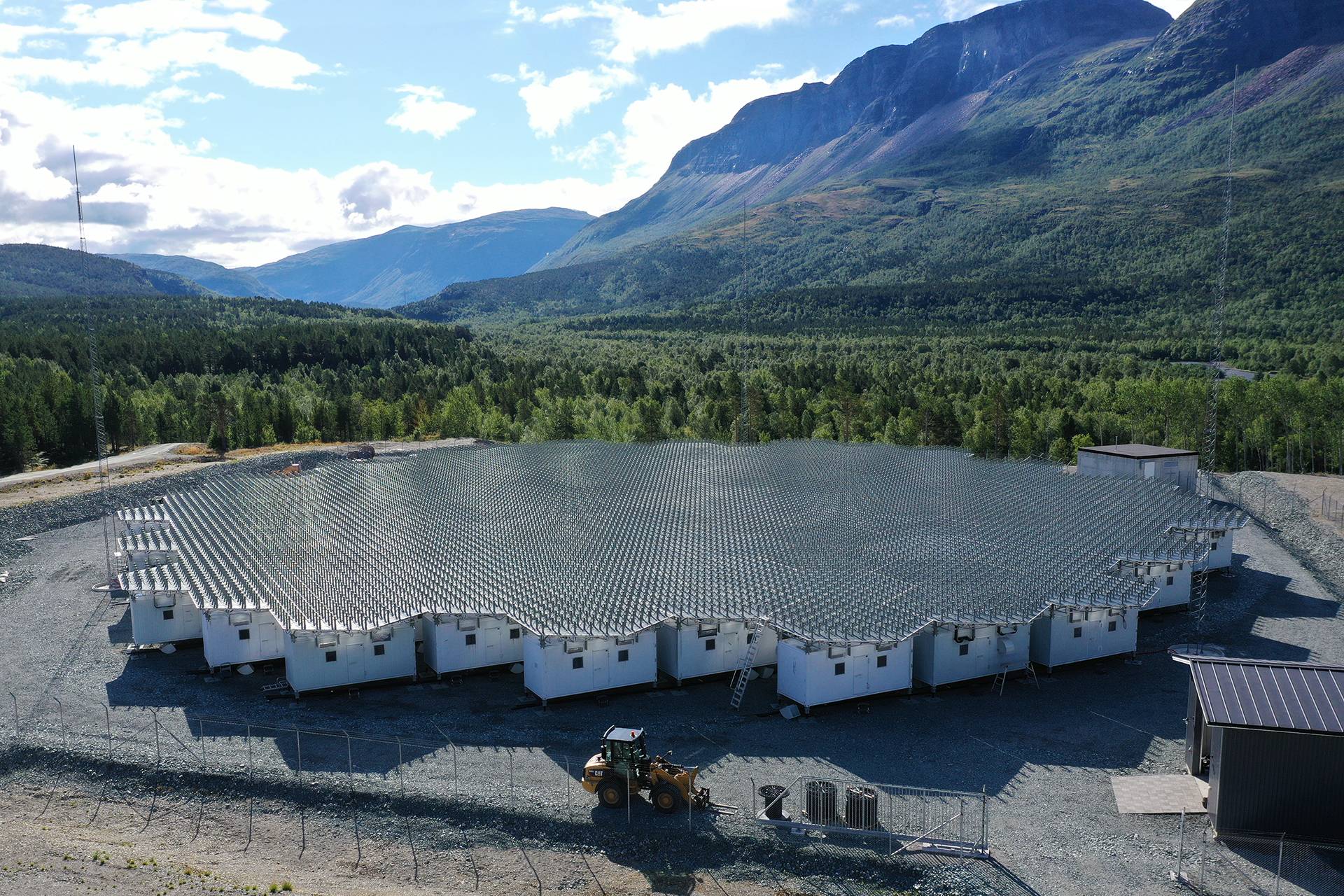Introduction
EISCAT Scientific Association invites applications for observing time on the EISCAT facilities in 2021, by individual scientists, research groups, and consortia throughout the world on equal, competitive basis. This opportunity opens in total 200 h of experiment time for international, peer-reviewed competition, and is available for the use of any of the current EISCAT facilities. Successful applicants will be awarded time on the facilities based on the scientific merit of their applications. Assistance with observing programs and data analysis will be provided. Please, if you are unfamiliar with EISCAT, contact us via the email address given below, and we will be happy to assist you, by advising you on the technical aspects of your proposal. We welcome applications both by young and established researchers.
Submissions
Applications for EISCAT PP time should be sent to Dr. Ingemar Häggström, by email to: ingemar.haggstrom@eiscat.se, to arrive no later than at 24:00 UTC on the submission deadline date. A confirmation of reception will be sent to the contact e-mail address provided in the application.
Submission deadlines
EISCAT PP experiment applications are considered during three rounds for experiments to be conducted during 2021. The three closing dates for submissions are:
- 1 November, 2020.
- 1 March, 2021.
- 1 August, 2021.
Submission for a given deadline implies that the observations are requested to be initially scheduled during the 6 month period which starts in 1 or 2 months after the respective deadline. Please, note that in general EISCAT experiments for a given month are scheduled latest by the 10th of the preceding month.
Application contents
Applications should consist of 2 parts, A) a free-form 2-4 page science description to concentrate on the scientific value of the proposed work, and B) a standard 1-2 page form to define experiment.
Part A should contain at least the following:
- Descriptive title and acronym of the experiment.
- Name of person submitting request, principal investigator, with his or her snail and email addresses and phone numbers.
- Names of other participants, co-investigators, with addresses.
- Name of a person to be contacted for coordinating the details of the experiments (if different from the one submitting the request), including one single email address to be used in communication concerning the application and experiment details.
- Short abstract (max 250 words), where the key science objectives are enumerated.
- Description of required background geophysical conditions, such as for solar activity, magnetic activity, season of the year, phase of the moon, specific dates, if any.
- List of the instruments and facilities, including non-EISCAT ones, which are required to complement the measurement setup (Detailed list on EISCAT facilities and their configuration is to be provided in part B of the application).
- Description of the measurements required to meet the science objectives by listing the primary and secondary parameters to be measured, the altitude, azimuth, and elevation ranges over which the measurements are to be made, and the time resolutions required by the study. Include the preferred radar operating modes, if known.
- Description why existing data in the MADRIGAL data bases are insufficient for the needs of your project.
- List of what existing data in the data bases come closest to meeting your needs.
- List of the duties of the participants.
- List of any facility personnel with whom you have discussed these ideas.
- A more detailed description of the objectives of the study and their relationship to previous studies, giving references. Including an attachment in lieu of a paragraph here may be an appropriate way to spell out these details; e.g., portions of a proposal to a funding agency with an indication of the grant status. A description of possible educational aspects of the study should be included. A list of the applicant’s most significant publications during the last 3-5 years is not a requirement for young scientists, but should be added when relevant.
Part B should contain fixed concise information:
- Title and acronym:
- Principal Investigator:
- Co-Investigators:
- Contact Person and a single email address for communication:
- Key Objectives:
- Geophysical Conditions Required:
- Equipment Needed (ESR/UHF/UHF tristatic/VHF/Heating/Passive):
- Primary Parameters to Measure:
- Need for Simultaneous Data/Dependence on Other Equipment:
- Existing Data Meeting Objectives:
- Existing Data Closest to Objectives:
- Participant Duties:
- Facility Personnel Contacted:
- Total Accounting Time Needed (hours):
- When would you like the experiment to be run, time of year/day, particular time:
- Financial Support (not radar time):
- Is the study part of a thesis work?
- Are you expecting EISCAT staff to run the exp?
- Have you been awarded EISCAT PP time before? If yes, give references.
- Further summary details and background (e.g. dependence on other instrumentation, max 1 page):
Peer-review process
Applications will be reviewed by the EISCAT-established Review Panel consisting of the EISCAT Scientific Advisory Committee and the EISCAT Staff Scientists. The panel will enlist the help of external referees where necessary. Proposals will be awarded time based on their scientific merit and novelty.
Evaluation criteria used by the Review Panel
- The overall scientific merit and potential of the proposal. Successful applications are expected to bring in significant new results and advance in the traditional ISR research areas, or novel science areas as described below.
- The scientific novelty of the proposal, including application of the EISCAT facilities in new areas, where ISR technique and/or other radio methods used at EISCAT would bring significant advance in the respective science field and/or novel use of the available techniques.
- The capability of the applicant(s) to fulfill the proposed research according to their plan, including whether the total duration proposed for the project is well-defined, EISCAT is well-suited for the proposed research and whether the plan for execution of the observational program is complete.
- The broader impact the proposal will have in increasing the diversity of the EISCAT research community, and in expanding the research capabilities of the EISCAT facilities.
- In case of two applications having similar merits in evaluation, preference will be given either to those applicants who are new to the EISCAT facilities, in order to enlarge the EISCAT user community and further more open access to the facilities, or to the applicant showing stronger educational impact in their proposal.
Applicants will be formally informed of the outcome of the review process by email to the contact address provided in the application. This letter will state whether the application has been successful, and the time which has been awarded. One should note that this might not be the full amount of time originally requested. This is often the case for new experiments, especially if they propose to employ any of the EISCAT facilities in a novel manner. Any restrictions which the Panel may have placed on the use of the time will also be stated, as will any comments or queries which they might have expressed. If the full amount of time requested has not been granted, then an explanation will always be given. Feedback to applicants will also be given whenever an application is unsuccessful.
- After the first deadline, 1 November 2020, the applicants will be informed well before 10 December, in order to allow possible experiment scheduling in January 2020.
- After the second deadline, 1 March 2021, the applicants will be informed well before 10 April, in order to allow possible experiment scheduling in May 2021.
- After the third deadline, 1 August 2021, the applicants will be informed well before 10 September, in order to allow possible experiment scheduling in October 2021.
Observer’s reporting requirement
In order to improve our facilities and services, we request observers who have completed an observing session to provide us with feedback about their experience. We also require the observers to report their final results, as conference presentations, published papers and thesis works, which are based on the observations performed. A short summary (max 1 page) of the experiment and foreseen results (even if they are negative) should be submitted within 4 weeks after the observations, and a complementing short (max 2 pages) final report within 12 months after the observations, including list of possibly published, submitted and foreseen publications, as well as the educational and/or science programmatic outcomes. Reporting is essential if you intend to submit future EISCAT PP time applications.




